Museum Cappella Sansevero
|
The Alchemist Chapel, where beauty and mystery blends to create a unique atmosphere, almost out of time
|
Piazza San Domenico Maggiore is one of the most interesting squares in Naples, situated on Spaccanapoli, the main street that traverses the Centro Storico.
It is home to two important attractions, namely the church of San Domenico Maggiore ...
...and the Cappella Sansevero, one of the most enigmatic chapels in Europe, if only because its creator, Raimondo di Sangro, was deemed to be the Leonardo da Vinci of his time.
The Cappella Sansevero, a jewel of the world's artistic heritage (also known as the Capella Sansevero de' Sangri or Pietatella or The Alchemical Chapel), is just north of the church of San Domenico Maggiore, (also in the historic center of Naples).
It contains works of art by some of the leading Italian artists of the 18th century.
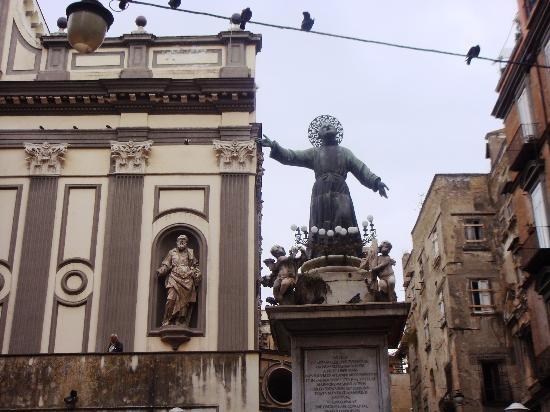
The origin of the chapel dates to 1590 when John Francesco di Sangro, Duke of Torremaggiore, after recovering from a serious illness, had a private chapel built in what were then the gardens of the nearby Sansevero family residence, the Palazzo Sansevero.
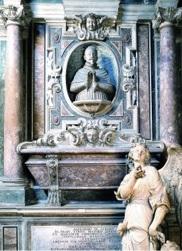 The building was converted into a family burial chapel by Alessandro di Sangro in 1613 (as inscribed on the marble plinth over the entrance to the chapel). The building was converted into a family burial chapel by Alessandro di Sangro in 1613 (as inscribed on the marble plinth over the entrance to the chapel).
Definitive form was given to the chapel by Raimondo di Sangro, Prince of Sansevero, who also included Masonic symbols in its reconstruction.
Until 1888 a passageway connected the Sansevero palace with the chapel. |
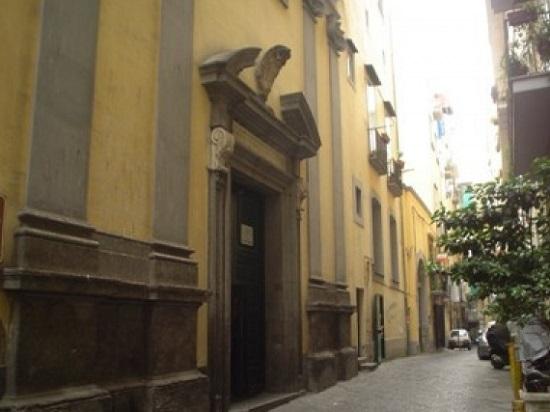 |
Masons have identified the chapel as the expression of a Masonic ideal, namely the progression towards salvation or enlightenment. Di Sangro illustrated this path with the graves, which proceed, virtue by virtue, to this culmination.
These virtues include: decorum, liberality, religion, softness of marriage, sincerity, self control, education, and divine love. |
The statues of virtues: La Modestia - Veiled Christ - Disillusion - Divine Love - Decorium - Liberality -
Self Controll - Education - Sincerity - Religious Zeal - Sweetness of the marital yoke. |
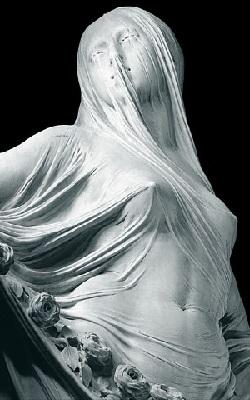 Modesty (Pudicizia, Chastity) was completed by Antonio Corradini in 1750 as a tomb monument dedicated to Cecilia Gaetani dell'Aquila d'Aragona, mother of Raimondo, who died on 26th December 1710, when Raimondo was not yet one year old and represented as a Roman vestal virgin. Modesty (Pudicizia, Chastity) was completed by Antonio Corradini in 1750 as a tomb monument dedicated to Cecilia Gaetani dell'Aquila d'Aragona, mother of Raimondo, who died on 26th December 1710, when Raimondo was not yet one year old and represented as a Roman vestal virgin.
Here, the artist (Antonio Corradini) who had also sculpted other veiled figures, attains a remarkable degree of perfection in shaping the veil laid elegantly and naturally over the body of the woman, as if the vapors from incense burners contributed to dampening the impalpable layer and extraordinarily adherent to the skin, girded round with a garland of roses. |
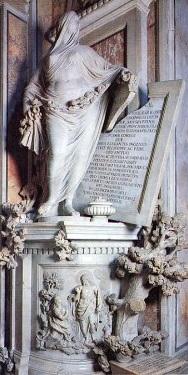 The bas-relief on the pedestal also makes explicit reference to the Gospel story 'Noli me tangere' (Christ appears to the Magdalene dressed as a gardener). The bas-relief on the pedestal also makes explicit reference to the Gospel story 'Noli me tangere' (Christ appears to the Magdalene dressed as a gardener).
The veiled woman can be interpreted as an allegory of Wisdom, and the reference to the veiled Isis, special divinity of the science of initiation, appears extremely clear (without considering that a long tradition, in reality unsubstantiated, holds that Modesty is situated in the place where once a statue of Isis stood in the Greek Neapolis).
The art historians Joseph Rickwert and Rosanna Cioffi have also shown that the Veiled Truth engraved in the centre of the title page of the Encyclopedia is very similar to Corradini’s Modesty, and the sculptor’s association with Freemasonry is documented.
The oak that bursts out of the naked stone, lastly, is held by some to be an allusion to the arbor philosophica. |
| A Christ Veiled under a Shroud (also called Veiled Christ), shows the influence of the veiled Modesty, and was completed in 1753 by Giuseppe Sanmartino (1720-1793). |
 |
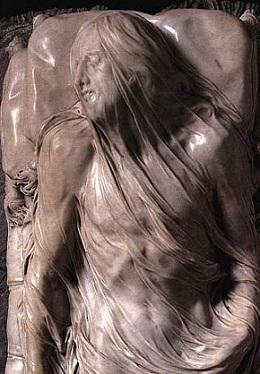 Placed at the centre of the nave of the Chapel, the Veiled Christ is one of the most famous and impressive works of art in the world, a pearl of baroque art which we owe exclusively to the inspired chisel of Sanmartino and the confidence di Sangro had in him. Placed at the centre of the nave of the Chapel, the Veiled Christ is one of the most famous and impressive works of art in the world, a pearl of baroque art which we owe exclusively to the inspired chisel of Sanmartino and the confidence di Sangro had in him.
It was the Prince’s wish that the statue be made by Antonio Corradini, who had already done Modesty for him.
However, Corradini died in 1752 and only managed to make a terracotta scale model of the Christ, which is now preserved in the Museo di San Martino.
So Raimondo di Sangro appointed a young Neapolitan artist, Giuseppe Sanmartino, to make “a life-sized marble statue, representing Our Lord Jesus Christ dead, and covered in a transparent shroud carved from the same block as the statue”.
Sanmartino’s Christ is one of the greatest sculptures of all time. Since the eighteenth century, travelers of all levels of distinction have come to contemplate this artistic miracle, to be disconcerted and enraptured by it.
One of its innumerable admirers was Antonio Canova, who tried to buy it during his stay in Naples, and legend has it that he swore he would have given ten years of his life to have been the sculptor of this incomparable marble. |
 |
Another masterpiece is without question the Disillusion (Deception-Disinganno), a work dedicated by Raimondo di Sangro to his father Antonio, Duke of Torremaggiore.
An open book rests on the globe; it is the Bible, a sacred text, but also one of the three “great lights” of Masonry.
The bas-relief on the pedestal, with the story of Jesus restoring sight to the blind, accompanies and strengthens the meaning of the allegory. In his Istoria dello Studio di Napoli (1753-54), Giangiuseppe Origlia rightly defines this statue as “the last and most trying test to which sculpture in marble can aspire”.
The reference is naturally to the virtuoso work on the net, which amazed famous eighteenth- and nineteenth-century travellers, and continues to astound tourists today. |
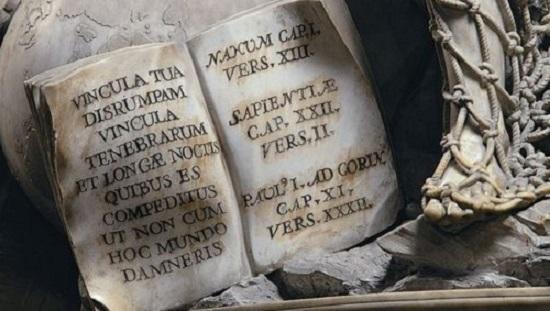 |
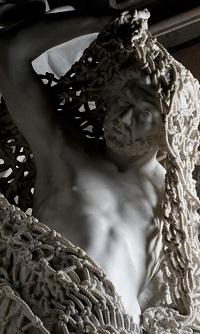 After the premature death of his wife, Antonio led an eventful and disordered life, entrusting his son to the care of his grandfather Paolo. “Enslaved – as the plaque states – to youthful passions”, the Duke traveled throughout Europe, but in his old age, now tired and repentant of his errors, he returned to Naples, where he spent his last years in the tranquility of the priestly life. After the premature death of his wife, Antonio led an eventful and disordered life, entrusting his son to the care of his grandfather Paolo. “Enslaved – as the plaque states – to youthful passions”, the Duke traveled throughout Europe, but in his old age, now tired and repentant of his errors, he returned to Naples, where he spent his last years in the tranquility of the priestly life.
The group of sculptures describes a man who has been set free of sin, represented by the net into which the Genoese artist put all his extraordinary skill.
A little winged spirit, with a small flame on his forehead, a symbol of human intellect, helps the man to free himself from the intricate netting, while pointing to the globe at his feet, symbol of worldly passions. |
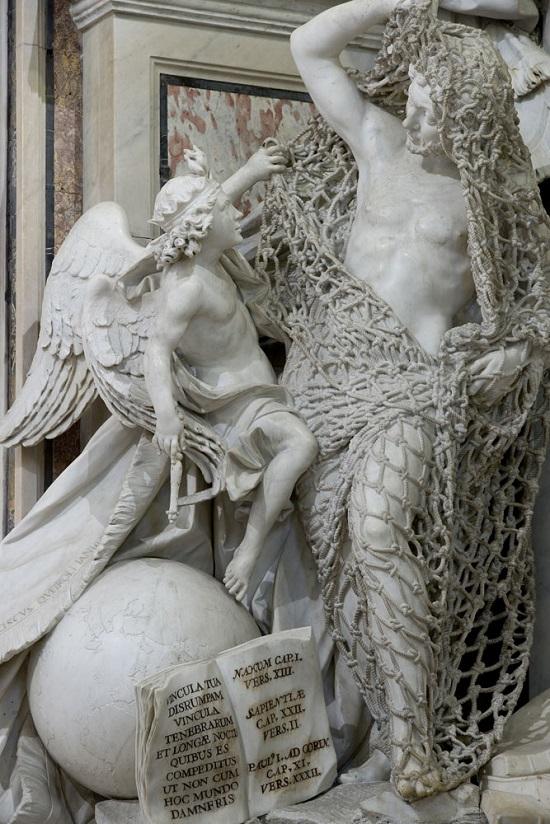 |
| Divine Love, dedicated to Giovanna di Sangro of the Marquises of San Lucido, wife of the fifth Prince of Sansevero, Giovan Francesco di Sangro, is even now of uncertain attribution. |
 |
| A youth wrapped in a cloak looking towards the heavens and holding a flaming heart in his right hand extols the noblewoman’s love of God, commemorated in the inscription on the pedestal. |
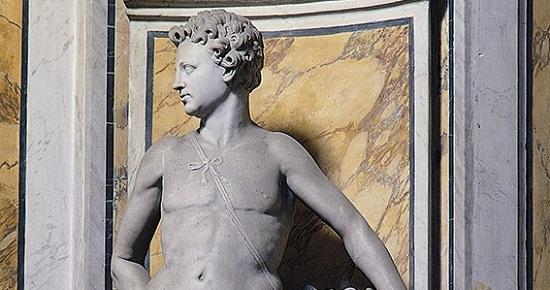 |
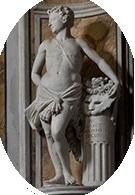 Decorio: This work, dedicated to the first and second wives of Giovan Francesco di Sangro, Prince of Sansevero, represents the quality shared by these two women: decorum. Decorio: This work, dedicated to the first and second wives of Giovan Francesco di Sangro, Prince of Sansevero, represents the quality shared by these two women: decorum.
This Virtue is embodied in the form of a youth partially draped in a lion skin.
By his side, there is the head of the same animal, resting on a half column,symbolizing the victory of the human spirit over unbridled nature. |
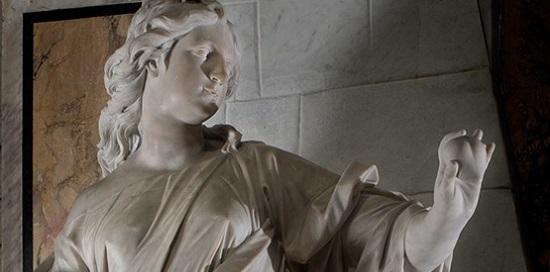 |
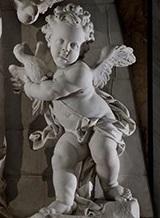 The model of Sincerity – A woman of serene beauty, wrapped in static drapery gathered with grace and elegance, holds a heart in her left hand, and in the right a caduceus, the former being a symbol of love and charity, and the other of peace and reason. The model of Sincerity – A woman of serene beauty, wrapped in static drapery gathered with grace and elegance, holds a heart in her left hand, and in the right a caduceus, the former being a symbol of love and charity, and the other of peace and reason.
Below, we can admire a chubby putto of admirable workmanship – and two doves representing purity, marital loyalty and fertility. |
| |
| Religious Zeal - Dedicated to Ippolita del Carretto and Adriana Carafa della Spina, wives of the founder of the Chapel Giovan Francesco di Sangro. The fervent devotion of the two women is brought out in this complex group of sculptures, dominated by the figure of an elderly man with the Light of Truth in one hand, and in the other a lash to punish sacrilege, while he tramples under foot a book from which the serpents of heresy emerge. A putto with a torch completes the work of destroying the heretical texts, and two other puttini hold up the medallion portraying the two women in profile. |
| The ceiling, the Glory of Paradise, was painted by Francesco Maria Russo in 1749. |
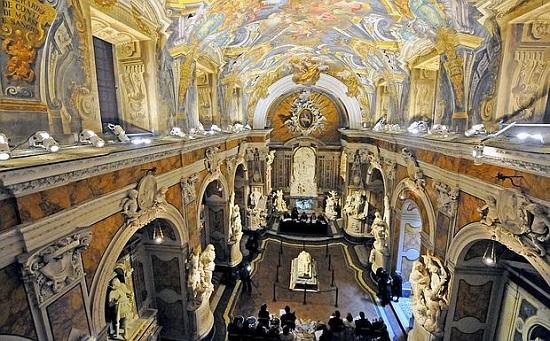 |
The chapel also displays two early examples of what was long thought to be a form of plastination in its basement.
The Anatomical Machines : These "anatomical models" (macchine anatomiche) were thought to be examples of the process of "human metallization" (metallizzazione umana) as implemented by anatomist Giuseppe Salerno ca. 1760 from a commission by Raimondo di Sangro. |
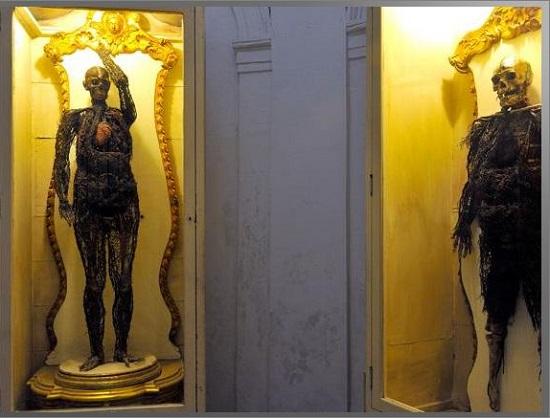 |
The exhibit consists of a mature male and a pregnant woman.
Their skeletons are encased in the hardened arteries and veins which are colored red and blue respectively.
Previously, historians have surmised that the corpses could have been created by injecting the hardening substances directly into the veins of living subjects. |
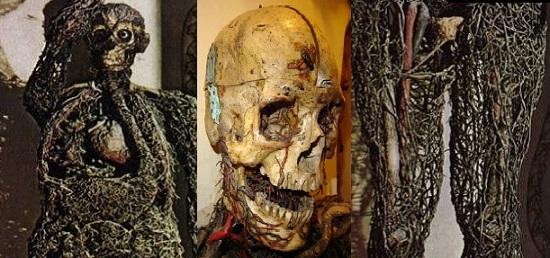 |
| However, recent analysis shows no evidence of techniques involving injection. Analysis of the "blood vessels" indicate they are constructed of beeswax, iron wire, and silk. |
|
| The chapel is tucked away but it is worth the search. |
|
|
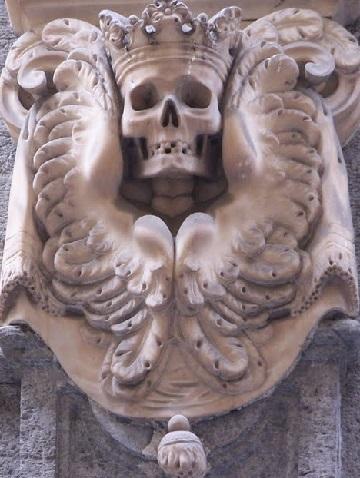 |
The chapel received its alternative name of Pietatella from a painting of the Virgin Mary (La Pietà), spotted there by an unjustly arrested prisoner, as reported in the book "Napoli Sacra" by Cesare d'Engenio Caracciolo in 1623.
When the chapel was constructed it was originally dedicated to Santa Maria della Pietà, after the painting. |
The chapel houses almost thirty works of art, among which are three idiosyncratic sculptures.
These statues are emblematic of the love of decoration in late-Baroque, and are made of a marble-like substance that, in whole or in part, was invented by Raimondo who also participated in the design of the works of art in the chapel. |
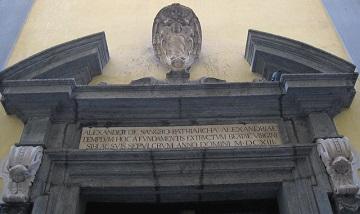 |
| Raimondo di Sangro, the seventh Prince of Sansevero, was born in 1710. He spoke many European languages, as well as Arabic and Hebrew and moved in the highest social circles and corresponded with the greatest scientific scholars of his town. |
| Family coat of arms |
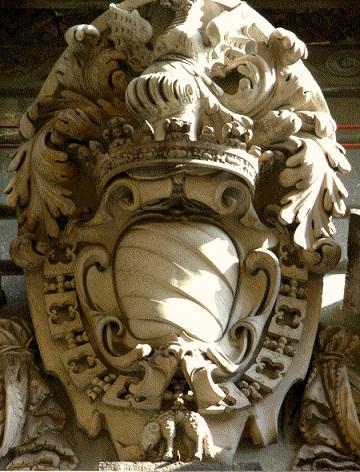 |
| He was very much like Leonardo da Vinci: an inventor, interested in the human body, and apparently also interested in alchemy, though it is not always clear whether he practiced advanced science. |
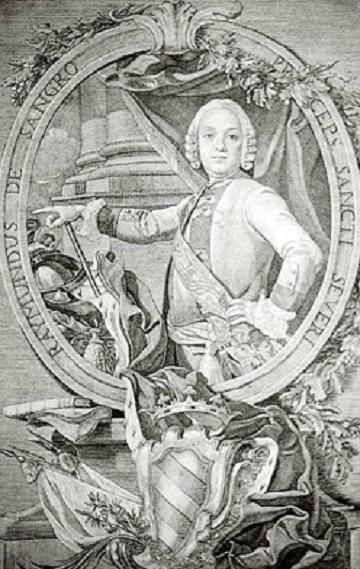 |
| In the underground laboratories of his palace, in Largo San Domenico Maggiore, the Prince dedicated himself to experiments in the most disparate fields of the sciences and the arts, from chemistry to hydrostatics, from typography to mechanics, obtaining results which appeared “prodigious” to his contemporaries. |
| “A Brief Note on what can be seen in the House of the Prince of San Severo”, published in 1766, and therefore most likely written by the Prince himself, reads: “In the Chapel one can see two Anatomic Machines, that is, skeletons, a male and a female, made by injection, which because of their being complete and of their having undergone such diligent treatment, can be said to be unique in all of Europe”. |
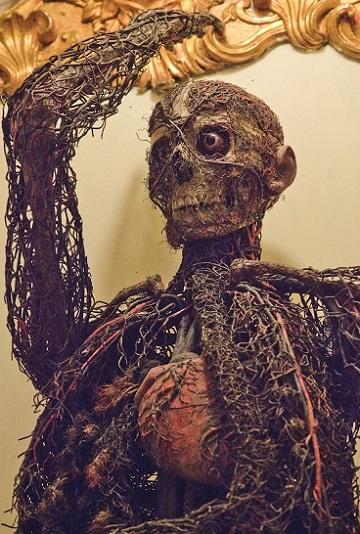 |
Because of his mainly esoteric conception of knowledge, di Sangro was, however, always reluctant to reveal the “secret” details of his inventions.
His intellectual output has therefore passed to posterity above all thanks to the rich symbolism of the Sansevero Chapel, a glory of world art, of whose impressive iconographic design the Prince was the ingenious creator. |
| The legend of the Veil Raimondo di Sangro’s fame as an alchemist and daring experimentalist has spawned various legends about him. One of these regards the veil of Sanmartino’s Christ. |
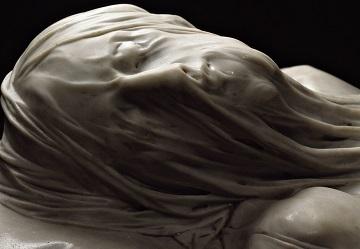 |
| For over two-hundred-and-fifty years, in fact, travelers, tourists and even a number of academics, incredulous at the transparency of the shroud, have mistakenly thought it the result of some alchemical process of “marblisation” worked by the Prince of Sansevero. |
 |
| In reality, the Veiled Christ is entirely hewn in marble from a single block of stone, as scrupulous study and documents dating from the time of the statue show. |
 |
The legend of the veil is slow to die, however. The aura of mystery that surrounds the Prince of Sansevero and the “liquid” transparency of the shroud continue to fuel it.
For his part, it was di Sangro’s aim – on this and in other occasions – to inspire wonder.
It is no coincidence that it was he himself who noticed that the marble veil was really impalpable and “made with such art as to leave the most skilled observers in awe”. |
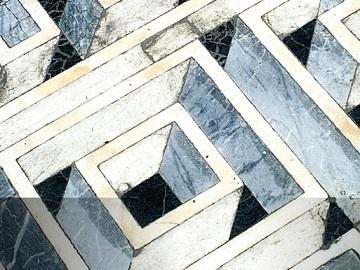 |
| The original floor (most of the present one dates from 1901) was in black and white (said to symbolize good/evil) in the design of a labyrinth (a masonic symbol for "initiation"). |
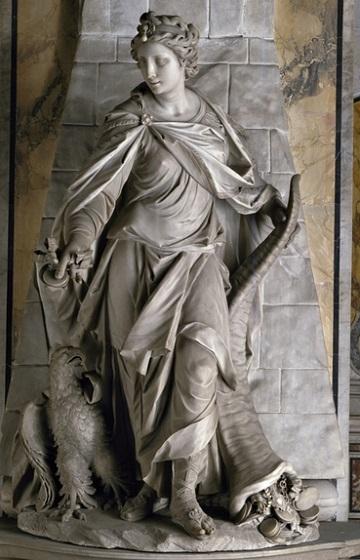 |
Liberality : In her left hand the woman holds a cornucopia overflowing with gold and jewels, while in the right she holds some coins and a compass, emblems of generosity and equilibrium.
The eagle, placed symmetrically to the cornucopia, represents strength and temperance, as well as being – according to the mediaeval bestiaries – the only animal capable of looking into the sun.
Behind the figure is a kind of pyramid, maybe a symbolic reference to ancient Egyptian Wisdom and the prisca theologia. |
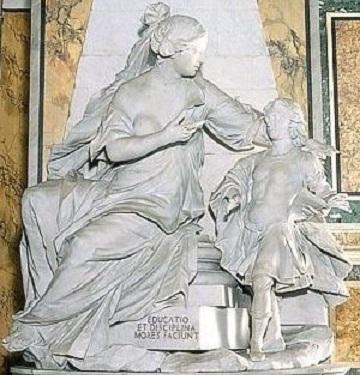 |
Education, allegorically represented by a woman intent on instructing a child, bears on the pedestal the motto “Educatio et disciplina mores faciunt”, i.e. “Education and discipline form good behaviour”.
The disciple, carefully listening to the solicitous lessons of the teacher, holds Cicero’s De officiis in his left hand.
This text was held to be an irreplaceable guide to the moral problem of what is useful and honest. |
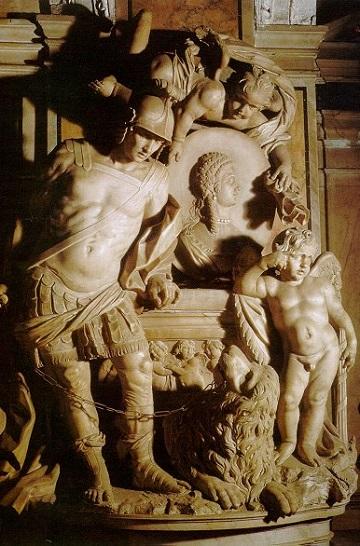 |
| Above, Self-control-strength of character of the deceased, “never defeated by hostile destiny nor too exalted by fortune”, is this Roman soldier with a tame lion on a chain, almost hypnotized by the man’s gaze: intellect and will thus prevail over instinct, savage energy and the vanity of the passions. |
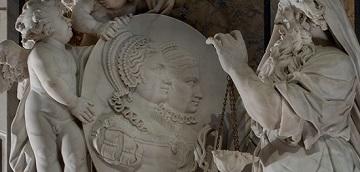 |
Religious Zeal - Dedicated to Ippolita del Carretto and Adriana Carafa della Spina, wives of the founder of the Chapel Giovan Francesco di Sangro.
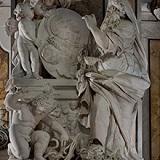 The fervent devotion of the two women is brought out in this complex group of sculptures, dominated by the figure of an elderly man with the Light of Truth in one hand, and in the other a lash to punish sacrilege, while he tramples under foot a book from which the serpents of heresy emerge. The fervent devotion of the two women is brought out in this complex group of sculptures, dominated by the figure of an elderly man with the Light of Truth in one hand, and in the other a lash to punish sacrilege, while he tramples under foot a book from which the serpents of heresy emerge.
A putto with a torch completes the work of destroying the heretical texts, and two other puttini hold up the medallion portraying the two women in profile. |
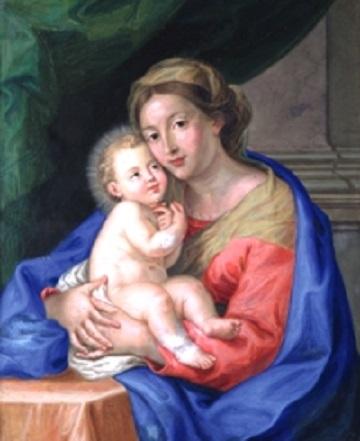 |
In the basement there is a painting by the Roman artist Giuseppe Pesce, Madonna con Bambino, dating from around 1750.
It was painted using wax-based paints of Raimondo di Sangro's own invention.
The prince presented this painting to his friend Charles Bourbon, king of Naples. |
| NOT ALLOWED TO TAKE PICTURES |
Opening days: 9.30am-6.30pm
Sundays and holidays: 9.30am-2.00pm
Last entry 20 min. before closing
Closed on Tuesdays.
Standard Ticket: € 7.00
Artecard: € 5.00
Young people from 10 to 25 years: € 5.00
Schools: € 2.00
Under 10 years: free
The tour might take 30 minutes. |
|
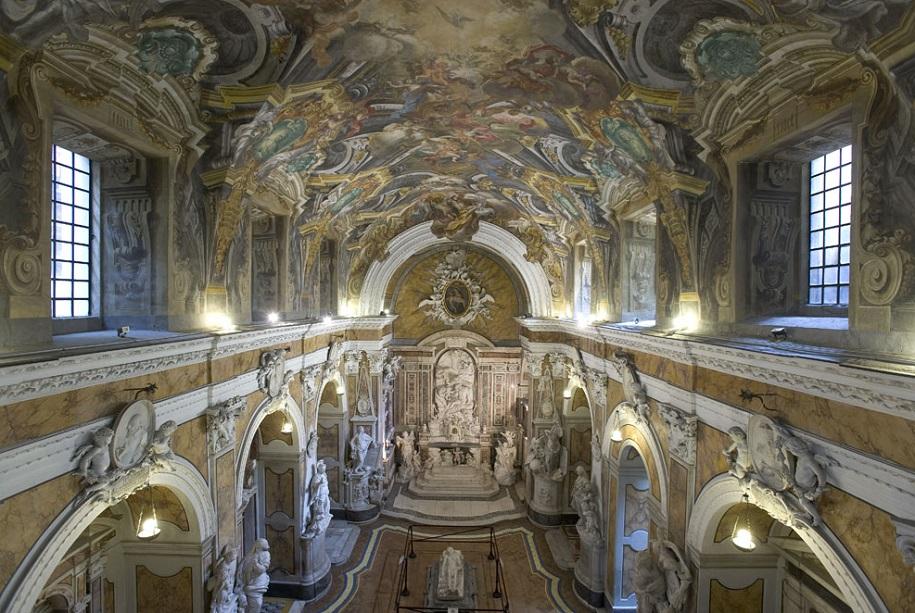 |
 |
La vetrina ideale per promuovere i vostri prodotti e servizi sul mercato Nord Americano ma che potrebbe essere un punto di visibilità anche nei vari mercati internazionali.
AZIENDE - PRODUTTORI - STRUTTURE RICETTIVE - GUIDE TURISTICHE - TOUR OPERATORI
Ai nostri visitatori piace il Sud Italia, vuoi dire loro qualcosa?
Il nostro obiettivo e' quello di promuovere prodotti tipici del Sud in un contesto di marketing globale, e allo stesso tempo proporre
il nostro Meridione come alternativa turistica, ben consapevoli che il successo dell'uno è essenziale per il successo dell'altro.
Paesi di provenienza dei visitatori in ordine numerico
Stati Uniti - Canada - Italia - Gran Bretagna - Australia - China - Germania - Francia - Nuova Zelanda - Olanda
Coloro interessati ad inserire la loro attivita'/azienda/ nel sito
sono pregati di mettersi in contatto usando il modulo sottostante .
Per saperne di piu'...

|

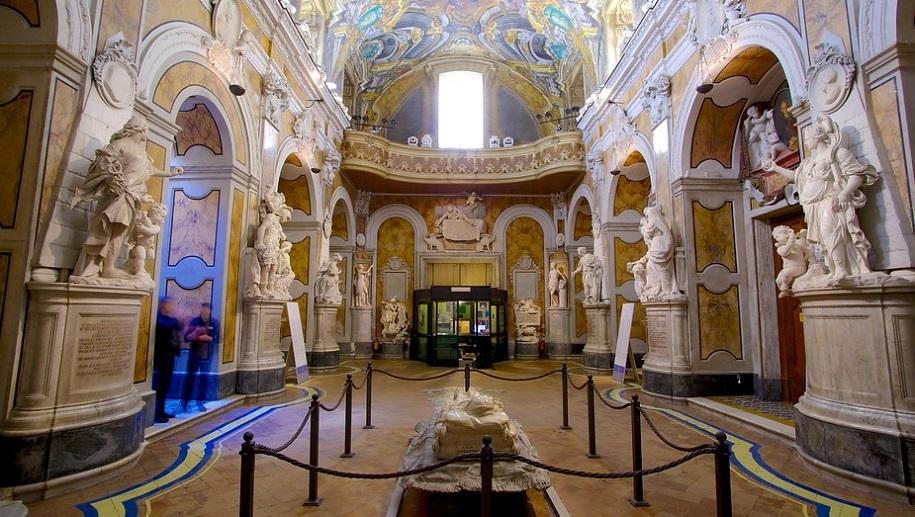

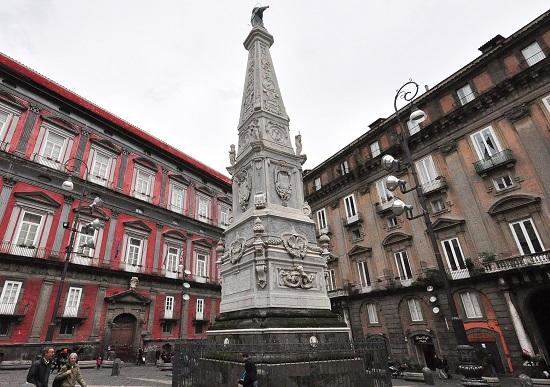

 The building was converted into a family burial chapel by Alessandro di Sangro in 1613 (as inscribed on the marble plinth over the entrance to the chapel).
The building was converted into a family burial chapel by Alessandro di Sangro in 1613 (as inscribed on the marble plinth over the entrance to the chapel). 

 The bas-relief on the pedestal also makes explicit reference to the Gospel story 'Noli me tangere' (Christ appears to the Magdalene dressed as a gardener).
The bas-relief on the pedestal also makes explicit reference to the Gospel story 'Noli me tangere' (Christ appears to the Magdalene dressed as a gardener). 
 Placed at the centre of the nave of the Chapel, the Veiled Christ is one of the most famous and impressive works of art in the world, a pearl of baroque art which we owe exclusively to the inspired chisel of Sanmartino and the confidence di Sangro had in him.
Placed at the centre of the nave of the Chapel, the Veiled Christ is one of the most famous and impressive works of art in the world, a pearl of baroque art which we owe exclusively to the inspired chisel of Sanmartino and the confidence di Sangro had in him.

 After the premature death of his wife, Antonio led an eventful and disordered life, entrusting his son to the care of his grandfather Paolo. “Enslaved – as the plaque states – to youthful passions”, the Duke traveled throughout Europe, but in his old age, now tired and repentant of his errors, he returned to Naples, where he spent his last years in the tranquility of the priestly life.
After the premature death of his wife, Antonio led an eventful and disordered life, entrusting his son to the care of his grandfather Paolo. “Enslaved – as the plaque states – to youthful passions”, the Duke traveled throughout Europe, but in his old age, now tired and repentant of his errors, he returned to Naples, where he spent his last years in the tranquility of the priestly life.





















 The fervent devotion of the two women is brought out in this complex group of sculptures, dominated by the figure of an elderly man with the Light of Truth in one hand, and in the other a lash to punish sacrilege, while he tramples under foot a book from which the serpents of heresy emerge.
The fervent devotion of the two women is brought out in this complex group of sculptures, dominated by the figure of an elderly man with the Light of Truth in one hand, and in the other a lash to punish sacrilege, while he tramples under foot a book from which the serpents of heresy emerge.


